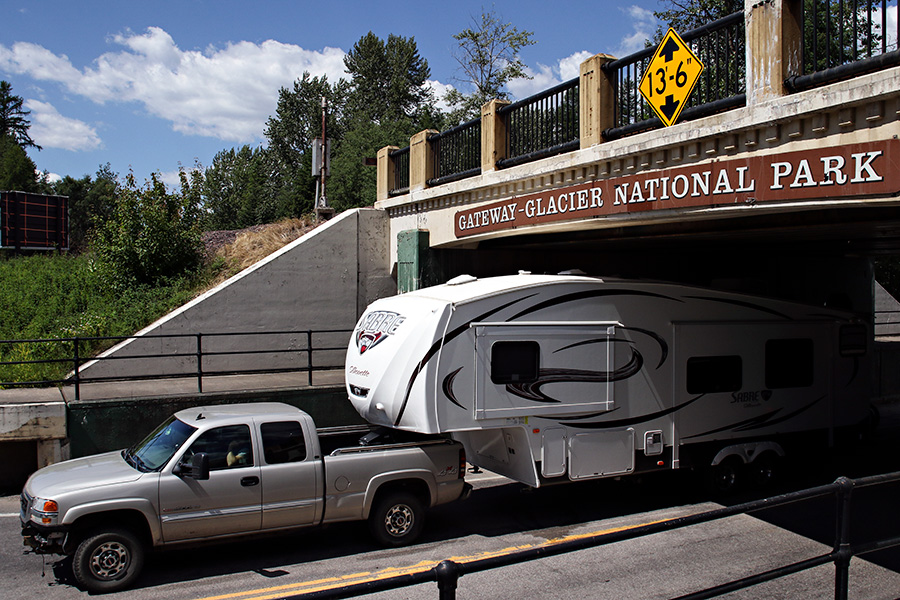With Glacier National Park slated to reopen its west entrance the second week of June, Gov. Steve Bullock on Thursday announced new measures to safeguard gateway communities bracing for a surge in visitation, including additional community testing and contact tracing.
Bullock’s announcement comes as Montana prepares to enter Phase 2 of the state’s staggered reopening plan, which begins June 1 and includes lifting a quarantine order on out-of-state travelers visiting for non-essential purposes — a move that is expected to usher in a summer tourism season tempered by health precautions and guidelines surrounding the COVID-19 pandemic.
While Glacier Park officials have not announced a specific date to reopen the west entrance, they have released details of a phased plan that would initially provide access to the Going-to-the-Sun Road from the West Glacier entrance to the closure at Avalanche Campground. Hiker and biker access would be allowed beyond the gate as plow crews work to clear the entirety of the road to Logan Pass.
Visitor amenities and concessions will be limited, though public restrooms will open along with some trail access.
Glacier National Park Superintendent Jeff Mow said he continues to work with Bullock’s office along with state, county, federal and tribal health officials to anticipate COVID-19 impacts on gateway communities when the park reopens. Glacier National Park officials are working with local communities to put in place measures to respond swiftly should an outbreak or transmission of COVID-19 occurs.
Some of the measures will include established protocols for sick visitors and employees, testing sites located adjacent to the park, a surveillance monitoring program of asymptomatic staff working in the park, and COVID-19 information throughout the park, according to park officials.
Glacier’s eastern entrances (St. Mary, Many Glacier and Two Medicine) lie on the Blackfeet Indian Reservation and will remain closed until the Blackfeet Tribal Business Council lifts its prohibition on non-essential travel, which the Tribe on Thursday extended until June 30.
While some businesses operating in Montana’s gateway communities are cheering the move as a critical step toward reviving the beleaguered economy, lifting restrictions on out-of-state visitors also raises a host of concerns about the potential for new transmissions of COVID-19, particularly in counties with a tourism-driven outdoor economy like the Flathead Valley.
“As we enter the next phase of Montana’s reopening, we are asking the same of our visitors as we do from Montanans – heed state and local guidelines, engage in public health precautions, and exercise patience as tourism communities gradually welcome visitors back,” Bullock said. “We must all continue to work together to ensure that we can move forward together, while protecting our residents and businesses alike.”
Similarly, Yellowstone National Park, which is on track to open its three Montana entrances on June 1, is coordinating with gateway communities and the governor’s office to ensure adequate resources are available to meet the needs of residents, visitors and seasonal employees.
Those resources include funding for community testing and contact tracing in high-visitation communities, an informational campaign to educate visitors on responsible travel and local restrictions, and two grant programs to assist small businesses implement safety measures. One grant program, called the Montana Business Adaptation Program, will provide reimbursements for COVID-19 expenses related to keeping staff and businesses safe, ranging from the purchase of personal protective equipment to resources needed for staff to work remotely.
The funding for Montana-based businesses is available through a portion of the CARES Act, and totals $20 million, with the maximum reimbursement amount capped at $5,000 per business.
The other program, the Tourism Education Program, makes $15 million in CARES Act funding available to carry out a statewide informational campaign to educate visitors prior to and after arriving in Montana. The state Department of Commerce, in coordination with the Department of Health and Human Services, is leading the effort and will work with local tourism partners across Montana.
In addition to encouraging businesses in high-use, highly trafficked areas to develop plans to implement safety measures for employees and customers, the state will offer support to destination communities in the following ways:
Implementing community snapshot testing for frontline workers at no cost with need determined by local jurisdictions.
Providing resources to local providers for community testing to develop an early warning system for identifying new cases.
Assistance with contact tracing in the event of a positive test. Montana National Guard members currently on Title 32 orders have been directed to take an online contact tracing course and obtain a certificate, adding an additional 150 contact tracers if needed.
Offering financial assistance for safety measures to small businesses to better protect their customers and workers.
Public education outreach campaign, including resources for communities, tourism promotion organizations, employers and employees.
Using Montana Department of Commerce data, destination communities were determined through analysis of typical visitor travel in the state over the period from June through September looking at the top destination counties, as well as those counties that experience high visitation per resident. Those counties are: Cascade, Ravalli, Lewis and Clark, Flathead, Yellowstone, Missoula, Silver Bow, Sanders, Lake, Custer, Gallatin, Dawson, Carbon, Big Horn, Glacier, Madison, Beaverhead, Park, Mineral, and Richland.
Other counties will be eligible based on identified needs.
